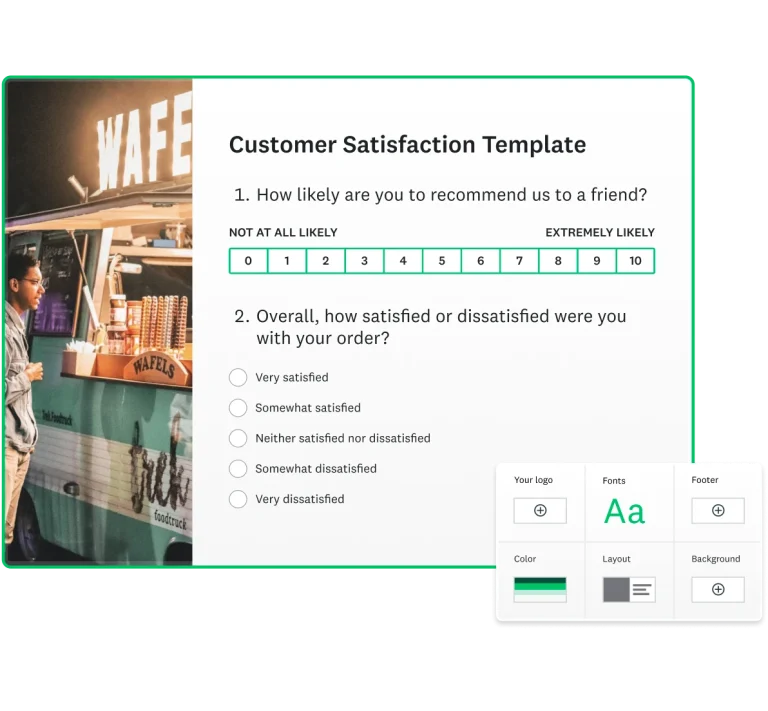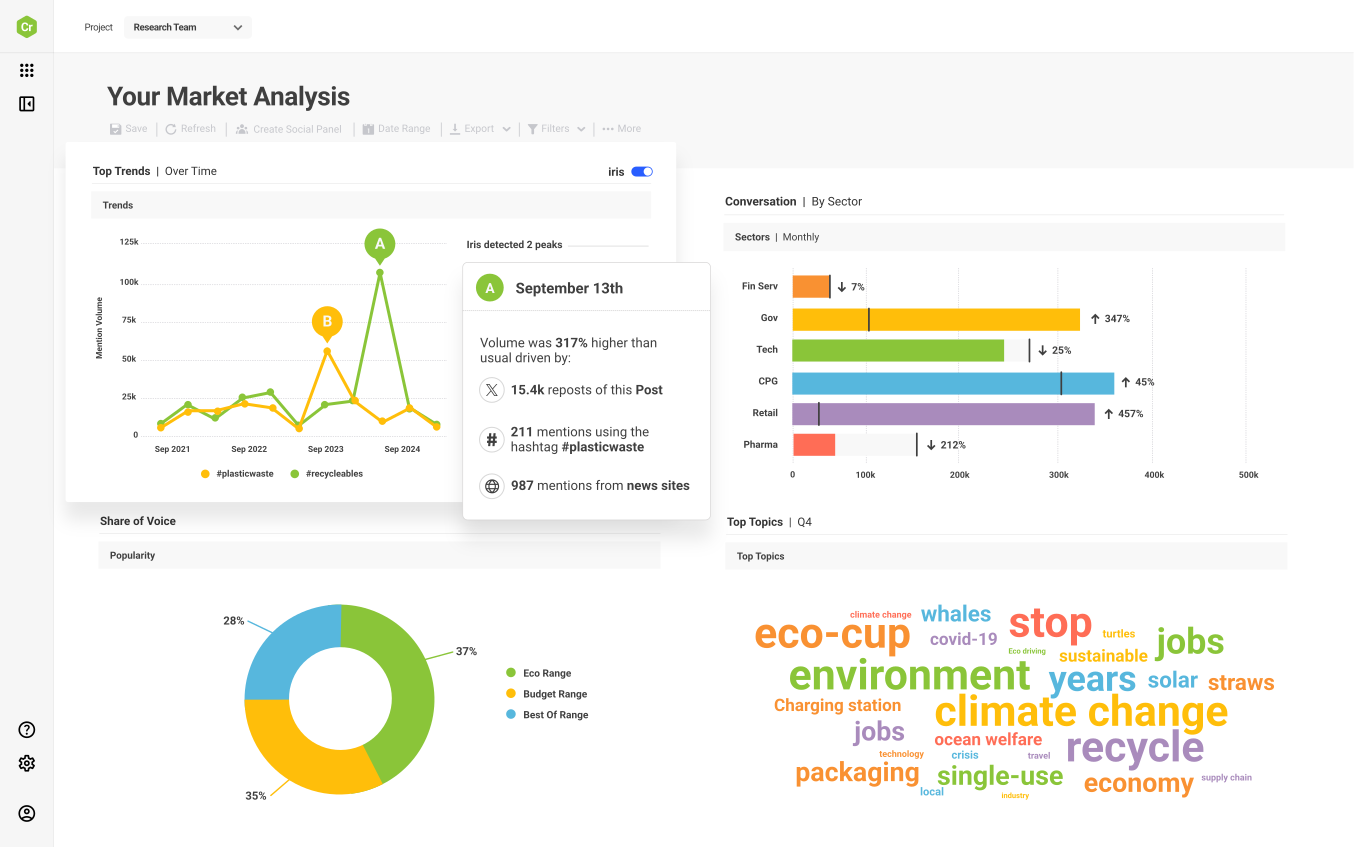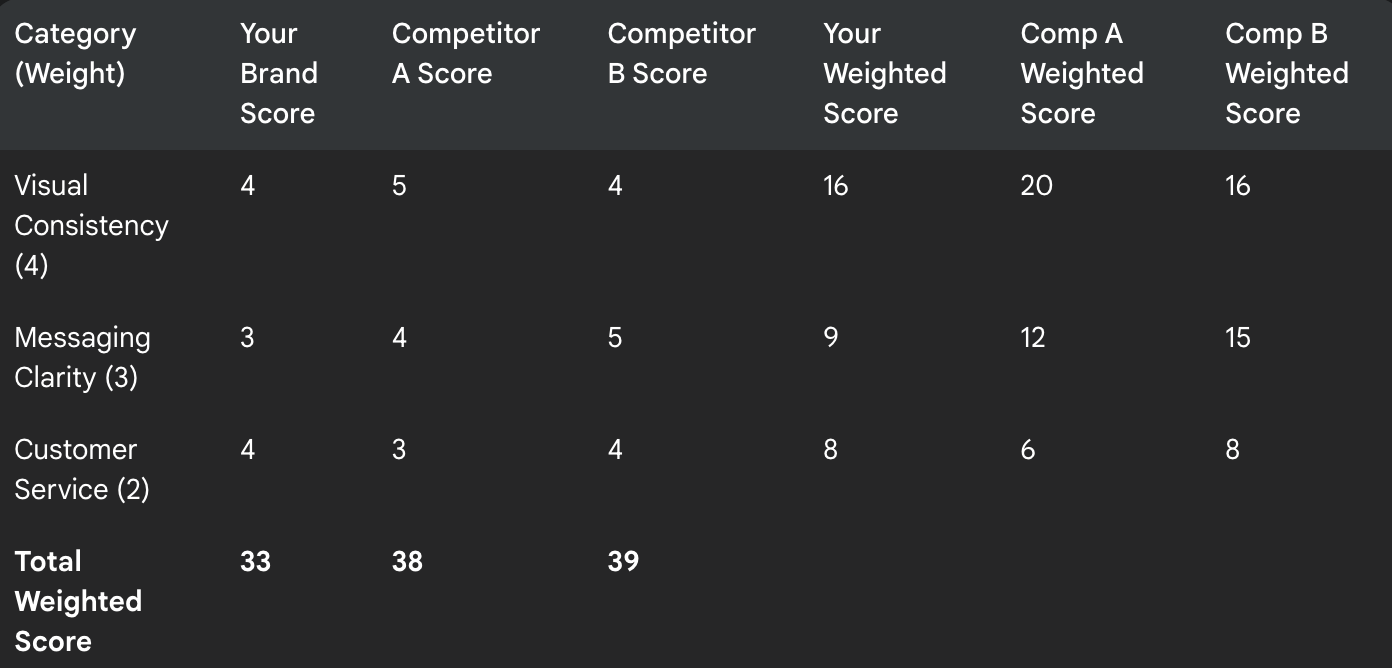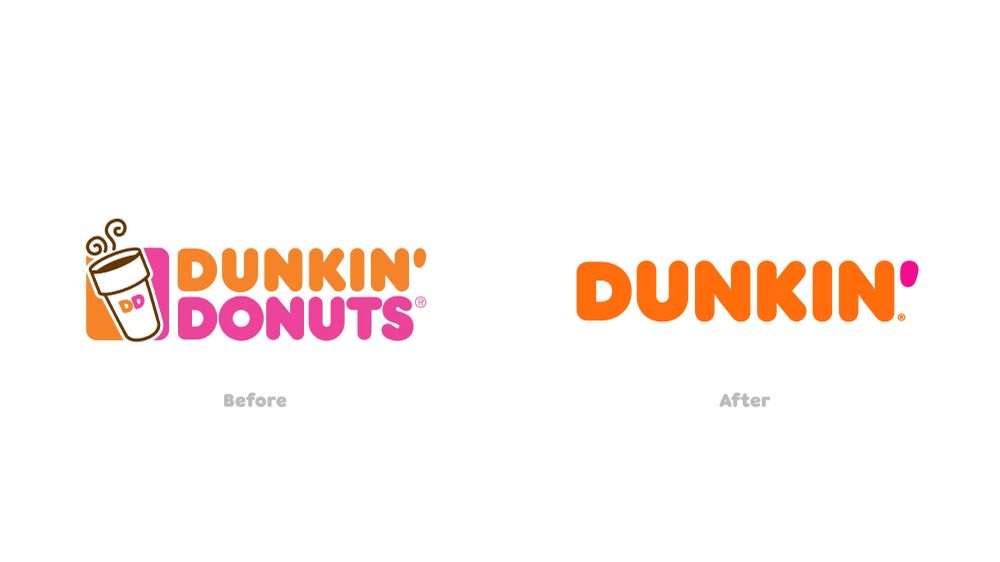Imagine trying to get someone's attention in a noisy room where everyone is shouting. It's tough, right? That's what it's like for businesses today. Customers feel the same way about brands constantly changing their look or message.
This is why brand consistency is not just a marketing term. It is essential for success. But how do you ensure your brand always looks and sounds like yours? What if your brand tools are not helping you stay consistent?
This article will help you understand your brand's voice and visual identity. It will also solve the puzzle of how to stand out and build trust with your audience.
Importance of Brand Consistency in 2025

Brand consistency is important because it builds trust and makes your business easy to spot. When customers consistently see your brand acting and looking the same, they pick you over others.
Think about your favorite brand's logo design. You know it right away, without even reading anything. That's the power of maintaining brand consistency! One study even found that consistent use of color can make a brand 80% more recognizable.
When people instantly know your brand, they start to trust you. Trusted brands make customers feel good about their choices. These customers often become loyal fans who buy from you again and tell their friends about you. This trust directly brings in more revenue and helps your business stand out.
Competitive advantage through benchmarking
In a busy market, being different and easy to remember is key. Brand consistency gives you an advantage because it makes your brand memorable and reliable. By conducting competitor analysis and looking at your rivals' consistency, you can find ways to improve and get ahead.
This comparison makes your brand seem more reliable and professional, encouraging customers to choose you. It also makes your brand even more valuable.
What Is Competitive Gap Analysis?

Competitive gap analysis helps your business determine what it lacks or where it can excel compared to rivals. It's like finding the puzzle pieces your brand needs by examining what your competitors already have. This process helps you see where you are now versus where you want to be, identifying key areas for improvement.
Defining the brand gaps
The main goal of competitive gap analysis is to find the areas where your company falls short compared to your own goals or to what your competitors offer. We call this measuring gaps.
These brand gaps can relate to your products, services, communication with customers, or even how people perceive your brand. By looking closely at these differences, you can find ways to improve and gain an edge in the market.
Types of gaps you can find
Competitive gap analysis looks at many kinds of differences, including:
- Product gaps: When a competitor has features, quality, or choices that your products do not have.
- Service gaps: When a rival offers better customer support or faster delivery than you do.
- Content gaps: When your competitors have more helpful information on their websites or social media than you do.
- Brand positioning gaps: When people see your brand differently than you want them to, especially compared to how they see your competitors.
Why competitive gap analysis matters for brand consistency
Competitive gap analysis is key for tracking your brand consistency. It provides a straightforward way to see if your brand's message and visual identity are consistent everywhere, internally and externally. More importantly, it shows how your brand consistency stacks up against your competitors.
Conducting a brand gap analysis and examining the differences between how you want your brand to be seen and how customers see it can pinpoint precisely where you are inconsistent.
For example, if your social media sounds different from your website or competitors use a style that makes them easier to recognize, this analysis will reveal these issues. It's a crucial tool for measuring gaps in how your brand is presented, helping you make it more uniform and effective in achieving brand recognition.
How To Measure Brand Consistency

To determine whether your brand is truly consistent, you need to use specific brand consistency measurement methods. These methods help you assess brand recognition, message clarity, and overall brand equity.
Let’s look at key metrics and useful brand tools for measuring consistency.
Assessing brand recognition
Your brand recognition score shows how easily your audience can spot your brand, indicating how memorable and unique your brand is.
The best way to get this score is to ask people through surveys. You can show them your logo, brand colors, tagline or slogan, and then ask if they know your company.
For example, you might show someone a set of colors and ask, "Which brand uses these colors?" Or play a sound and ask, "What brand is this?"
A higher score means your brand's visual elements and messaging resonate with people, making it more familiar and trustworthy. Comparing your score to competitors' helps you see if your brand consistency efforts are working.
Is your messaging consistent?
Measuring brand consistency in messaging means checking if your brand's main ideas, tone of voice, and key selling points are the same everywhere you communicate. People will get confused if your website, social media, emails, and ads tell different stories, undermining brand recognition.
One way to check this is by conducting a brand audit of all your content to ensure it follows your brand guidelines. You look for consistent word choice, tone, and adherence to brand values. Special brand tools like Natural Language Processing (NLP) can help analyze large amounts of content.
These tools can detect if your brand's voice changes across different campaigns or if important messages are missing. This provides a score for your message's consistency.
Assessing overall brand equity
Brand equity is about your brand's total value and strength in the market. It's not just about financial value; it's about how much value your brand name holds in customers' minds.
Key brand metrics for assessing brand equity include:
- Awareness: Do people know about your brand? We often find this out by asking in surveys, "Have you heard of [Your Brand]?" Seeing your brand everywhere helps with awareness and brand recognition.
- Associations: What ideas or feelings do people connect with your brand? Do they think "reliable" or "new and exciting?” Maintaining brand consistency in your messaging helps build strong, positive associations.
- Perceived quality: How do customers rate your products or services compared to others? High brand consistency often correlates with higher perceived quality.
- Purchase intent: How likely are people to buy from your brand when they need what you offer? We ask this in surveys like "How likely are you to buy from [Your Brand]?" A consistent and good brand experience makes people more likely to buy.
By tracking these brand metrics, you can see if your work to be consistent is making your brand stronger and more valuable in the eyes of your customers.
Tools To Help You Measure Brand Consistency
Several brand tools can help you measure and maintain your brand consistency. Combining these tools gives you a complete picture of your brand consistency measurement, helping you find exactly where to improve and close brand gaps.
Survey platforms
 Source
Source
These brand tools are essential for gathering direct feedback from your audience. You can create surveys to measure brand consistency indicators like brand recognition, awareness, associations, and purchase intent.
SurveyMonkey and Qualtrics are examples of survey platforms that allow you to distribute surveys widely and analyze responses efficiently.
Natural Language Processing (NLP) tools

Source
Beyond brand audits, dedicated NLP platforms can analyze vast amounts of text data from social media, customer reviews, news articles, and more. They help you monitor brand sentiment, track keyword usage, and identify inconsistencies in how your brand is discussed online or how your messages are perceived, contributing to overall brand governance.
Brandwatch and NetBase Quid, for example, specialize in social listening and sentiment analysis.
Brand Asset Management (BAM) systems
 Source
Source
These systems are central places for all your brand items, such as logos, fonts, colors, images, and brand guidelines. They ensure all teams can access the correct, up-to-date brand assets and guidelines, significantly reducing the risk of inconsistencies.
Frontify and Bynder are well-known examples of systems that help enforce visual and verbal brand consistency.
Step-By-Step Guide To Brand Gap Analysis
Want to know how your brand truly measures up? Follow these steps to conduct a comprehensive gap analysis and find exactly where your brand consistency stands compared to your goals and rivals.
Step 1: Set SMART objectives for your brand gap analysis
Before you start, decide what you want to achieve. Make your goals SMART: Specific, Measurable, Achievable, Relevant, and Time-bound.
For example, you might aim to increase your brand recognition by 10% in the following year. Another goal could be to close brand gaps by reducing the difference in your brand equity score compared to your top competitor by 5%.
Setting these clear targets helps guide your entire competitive gap analysis and makes it easier to measure your progress.
Step 2: Conduct a brand audit of internal brand touchpoints
Next, look closely at your brand. Conduct a full brand audit of every touchpoint where your brand interacts with customers. This includes your:
- Website: Are your logo, colors, fonts, and tone consistent with your brand guidelines?
- Social media: Do your posts match your brand's style and message?
- Ads: Do all your ads look and feel consistent?
- Customer interactions: Do your customer service people use the right brand voice?
- Packaging: Does your product packaging match your brand's look and values?
Document any problems you find. These represent your initial brand gaps.
Step 3: Conduct competitor analysis
After checking your brand, analyze your two or three main competitors. Observe their brand consistency in the areas you just audited for yourself.
Look at their:
- Websites: Is their design and message consistent throughout?
- Social media: How do they keep their voice and look consistent?
- Ads: Do their ad campaigns look and sound alike?
- Reviews: What do customers say about their brand's experience? Is it steady?
Additionally, examine how well they rank for brand-related keywords and whether their online presence reflects consistent messaging. This is where professional SEO services can help ensure your brand maintains visibility and consistency across search results.
This step helps you see what's normal in your industry and what competitors do well.
Step 4: Create a gap matrix
Now, compare your brand's information with that of your competitors. The best way to see these differences is by creating a gap matrix.
This simple table will compare your brand's scores—like how well people recognize your brand or how consistent your message is—against your competitors'. It will also help you identify key brand metrics for measuring gaps and assessing overall brand consistency.
Here is an example:

This chart will highlight your strengths and weaknesses compared to others, making it easy to find your most significant brand gaps and prioritize areas for improvement.
Step 5: Understand your brand gaps
Look closely at the results of your gap matrix to fully understand your brand gaps.
- Quantitative differences: Look for significant differences in scores. For example, if your brand recognition is 60% but a competitor is 75%, that's a clear 15% gap that needs to be addressed.
- Qualitative tone mismatches: Beyond numbers, notice if your brand's tone sounds different across various touchpoints, like social media versus your website. Or if a competitor always seems more "friendly" or "innovative" than your brand. These observations highlight inconsistencies in your brand's personality and overall consistency.
Finding numerical discrepancies and subjective misalignments is vital for understanding your brand gaps.
Step 6: Develop an action plan to close brand gaps
Once you've identified your brand gaps, create a clear action plan to close them. Prioritize and don't try to fix everything at once.
- Pick the biggest gaps: Focus on the problems that hurt your brand the most.
- Give out tasks: Decide who is responsible for each job.
- Set dates: Give realistic times for when each task should be finished.
Your plan might include updating your website, refining your brand guidelines, or training staff to ensure everyone contributes to maintaining brand consistency. This structured approach helps keep efforts focused and aligned with your brand strategy.
Step 7: Implement, monitor, and adapt your brand strategy
The work doesn't stop after the plan is made. Now you need to implement the tasks, monitor their impact, and be ready to adapt.
- Implement: Make the changes you planned.
- Monitor: Keep an eye on your SMART objectives from Step 1. Use your brand tools and metrics to see if you're effectively closing brand gaps and improving brand consistency.
- Adapt: The market and your competitors constantly change. Continuously compare your brand against rivals through benchmarking brand consistency. Regularly review your brand consistency measurement to ensure your brand stays strong and relevant. This ongoing process helps you stay ahead and supports your long-term brand strategy.
Benchmarking Brand Consistency Against Competitors
Benchmarking brand consistency means comparing your business's consistency to industry leaders or direct competitors. This process helps you see how well you're doing compared to others.
Why compare your brand?
Comparing your brand to others helps you see how you stand out and identify opportunities for a competitive advantage. You can learn valuable lessons from brands known for demonstrating high brand consistency.
This helps answer questions like: Is our brand recognition as strong as our main competitor's? Is our message as clear as the market leader's? Do customers trust us as much as they trust Brand X?
Benchmarking brand consistency gives you a good idea of what's possible for your brand's consistency and how to achieve it.
Using a weighted score for competitor analysis
To compare brands scientifically during competitor analysis, you can use a table often called a competitor array or a gap matrix.
First, you list your brand and key competitors. Then, you rate each one on their brand consistency in different areas, such as visual identity, message clarity, and customer service. You can use a scale, like 1-5, with five being the highest.
To make this even more insightful, you can use a weighted score. This means you assign each area a different level of importance, or a "weight." For example, if your brand’s visual brand consistency is more important than other business areas, you would assign it a higher weight. Additionally, you can incorporate sentiment analysis to evaluate how customers perceive each brand's messaging and overall reputation. This data-driven approach helps you understand what competitors are saying and how their audience feels about their brand communications.
Here is an example:

This method helps you see where your weighted score falls short compared to your rivals, highlighting areas where you need to close brand gaps. It guides your competitor analysis to focus on the most critical areas for improving brand consistency and overall brand equity.
Tools for content and message gaps
Special tools can help you find gaps in your brand's messages and content. These tools examine the real meaning of your content and compare it to competitors' content.
-
Semantic Brand Space (SBS) analysis: This tool looks at large amounts of text, like reviews or social media, to find out what ideas people connect with your brand and your competitors. It can show you "semantic gaps," where your brand isn't strongly linked to desired traits or where competitors are much stronger in their messaging, indicating potential brand gaps.
-
Content Gap Analysis: This tool finds topics or keywords that your competitors cover well but you don't, or where your content is weaker. If a competitor often writes great articles on a key topic for your audience, and you don't, that's a content gap you must address to improve your brand visibility and recognition.
These brand tools help you ensure that your brand's message remains consistent in presentation, comprehensive, and relevant, supporting your overall consistency measurement efforts.
Turning Insights into Brand Strength
Finding brand gaps is just the start. The real goal is to use your findings to close them and build a stronger brand. This means turning your findings into clear, actionable steps for your brand strategy.
Improving your brand strategy
Once you find your brand gaps, you must use these findings to improve your brand strategy. This improvement involves focusing on:
-
Messaging: If your messages are inconsistent, your brand's core story might be unclear, hindering brand recognition. You could fix this by clarifying your core message, creating clear guidelines for all teams, or training employees to use a consistent voice.
-
Visual identity: If your visuals are inconsistent, your logo, colors, or images might not be as strong as your competitors'. You might update your brand's look, improve your visual rules, or get a system to ensure all visuals are used correctly.
-
Customer experience (CX): If customer interactions are inconsistent, your plan could focus on making the service the same everywhere. You could also train staff better or use new tools to ensure a smooth experience.
- Competitor analysis: Benchmark your brand against competitors to understand where you fall short. Consider working with a competitive intelligence agency. Partnering with experts gives you deep insights into how your competitors are selling their services. This outside perspective can help you prioritize what to fix and what to amplify.
How to know if it's working
You need to track your progress to see if your efforts to close brand gaps are succeeding. Set a starting point and closely monitor your brand metrics or key performance indicators (KPIs).
Important metrics and KPIs for assessing brand equity and strength include:
-
Net Promoter Score (NPS): Measures how likely customers are to recommend your brand
-
Brand sentiment: Shows how people generally feel about your brand
-
Brand equity: This is your brand's overall value and strength
-
Website traffic & engagement: Are more people visiting your site and staying longer?
-
Conversion rates: Are more people doing what you want, like making a purchase?
Checking these brand metrics regularly helps you see the direct impact of your efforts to maintain brand consistency.
Real Examples of Closing Gaps: The Dunkin' Story

Many successful brands have fixed their consistency gaps. Take Dunkin' as an example. Over time, their full name felt limiting as they expanded their menu beyond just donuts to include more coffee and breakfast items.
The customer experience and messaging started to lean more heavily on their beverage offerings, but the "Donuts" in their name created a slight brand gap between their official identity and their evolving offerings.
Dunkin' officially dropped "Donuts" from its name in 2019 to close brand gaps and better reflect its wider menu. They kept their iconic pink and orange colors and playful font, but the simpler name communicated their broader focus.
This strategic update unified their brand identity with their evolving offerings, making the brand feel more modern and relevant to customers.
Align Your Team for Brand Consistency and Governance
Achieving company-wide brand consistency requires everyone in your organization to be on board. You can foster this alignment by:
-
Enforcing brand guidelines: Don't just create rules. Actively ensure everyone follows them. These guidelines should cover everything from your logo to your voice, ensuring uniform brand consistency.
-
Training: Regularly train all employees, especially those involved in content creation or direct customer interactions, to reinforce brand guidelines and consistent messaging.
-
Asset libraries: Create central, easy-to-access repositories for all your brand's approved materials, such as logos, images, and templates. Brand tools like Brand Asset Management (BAM) systems are perfect for this, promoting visual brand consistency.
When your team is aligned, maintaining brand consistency becomes a shared goal, not just a task for one department.
Maintaining Brand Consistency Over Time
Achieving brand consistency is not just a one-time task but an ongoing journey that requires continuous effort. The market changes, customers' tastes evolve, and your brand will grow. Therefore, constant vigilance is needed to ensure your brand stays strong and unified, reinforcing its brand equity.
Regularly measure brand consistency
To maintain brand consistency, you must make regular checks a normal part of your business.
-
Quarterly checks: These shorter, more frequent reviews can focus on specific areas, like social media messages or new product launches, helping to catch minor inconsistencies before they become significant issues and impact your brand recognition.
-
Annual checks: Conduct a deeper brand audit of every touchpoint where your brand interacts with customers once a year. This comprehensive review is similar to your initial brand gap analysis. It helps you see long-term trends and ensures your brand stays true to itself as it evolves, securing its brand equity.
Regular checks help you find problems early before they hurt your brand reputation.
Make consistency part of your business
For brand consistency to last, it must be part of how your company is managed. This is known as effective brand governance. To achieve this, you should:
-
Work together: Create teams with people from different departments, like marketing and customer service. They can meet regularly to discuss brand issues and share ideas, ensuring everyone is working together.
-
Use shared tools: Use tools that help with consistency. This includes systems where everyone can find the right logos and templates. Your brand stays consistent when everyone uses the same materials and follows the same steps.
Grow while staying true to your brand
The market is constantly changing with new trends and competitors. Your brand must be flexible enough to change without losing what makes it special. This is a delicate balance.
For example, your brand might need to use new social media sites or update its look to feel modern. But through all these changes, your core identity must stay the same.
Think of a tree: its leaves change, but its roots and trunk stay strong. A strong brand knows its core and builds on that foundation, rather than losing it.
Listen to what people say
Knowing how people feel about your brand is vital to maintaining brand consistency. This is where brand listening tools come in handy.
These tools constantly check social media, news, and review sites for mentions of your brand. They help you:
-
Track feelings: See if talks about your brand are positive, negative, or neutral.
-
Spot new trends: Understand what new topics your audience is discussing.
-
Find inconsistencies: If different messages about your brand appear, these tools can tell you.
-
Watch competitors: See what people are saying about your rivals.
By listening, you can quickly find and fix differences in how your brand is seen or talked about. This ensures your brand stays consistent and relevant.
Your Blueprint for Brand Consistency
Measuring your brand's consistency, especially against competitors, is essential for building a strong and thriving business. By using data to audit your brand, you'll see where you stand in terms of recognition, messaging, and overall strength. For businesses managing large-scale digital infrastructure, colocation solutions ensure reliable access to brand assets and consistent performance.
Don't let your brand miss out because of inconsistencies. Start your next competitive gap analysis today! Begin by setting clear goals and committing to building dedicated teams for consistency. You can also use platforms like DesignCrowd and Design.com for professional design support. These platforms help your brand remain consistent in its logos, posters, business cards, social media posts, and more.
Remember, consistency doesn't just build your brand, it secures its future.
Read more on designs here:
FAQs on Competitive Gap Analysis
Q1: What’s the difference between brand audit & brand gap analysis?
A brand audit is a deep dive into your brand's performance and internal consistency across all touchpoints. On the other hand, brand gap analysis takes that internal audit a step further by comparing your brand's performance and consistency against your goals and key competitors. This highlights areas where your brand falls short or your rivals excel, making it more strategic than just an internal audit.
Q2: How often should we conduct brand consistency audits?
You should establish audit frequency with ongoing rhythms. Quarterly checks are beneficial for specific campaigns or new product launches to catch minor inconsistencies early. A comprehensive brand consistency audit, including a competitive gap analysis, should ideally be conducted annually to track long-term trends and adapt to market changes.
Q3: What’s an acceptable brand consistency score?
There isn't a universal "acceptable" consistency score as it often depends on your industry, goals, and metrics. The aim is continuous improvement. Benchmarking against your top competitors can give you a realistic target, as your goal should be to achieve a score comparable to or better than that of industry leaders.
Q4: Can small businesses use competitive gap analysis?
Yes, absolutely! Competitive gap analysis can significantly benefit SMB brand consistency. It helps small businesses understand how they stack up against larger or more established competitors, identify opportunities to stand out, and ensure their limited resources are focused on building a strong, recognizable brand from the start.
Hannah Suroy suroy loves turning big stories into easy-to-digest articles about movies, TV, business, and more. These days, she mainly writes creative articles and insights focused on the world of design.
Original Artwork by Khim John Blazo
Written by DesignCrowd on Thursday, June 26, 2025
DesignCrowd is an online marketplace providing logo, website, print and graphic design services by providing access to freelance graphic designers and design studios around the world.

